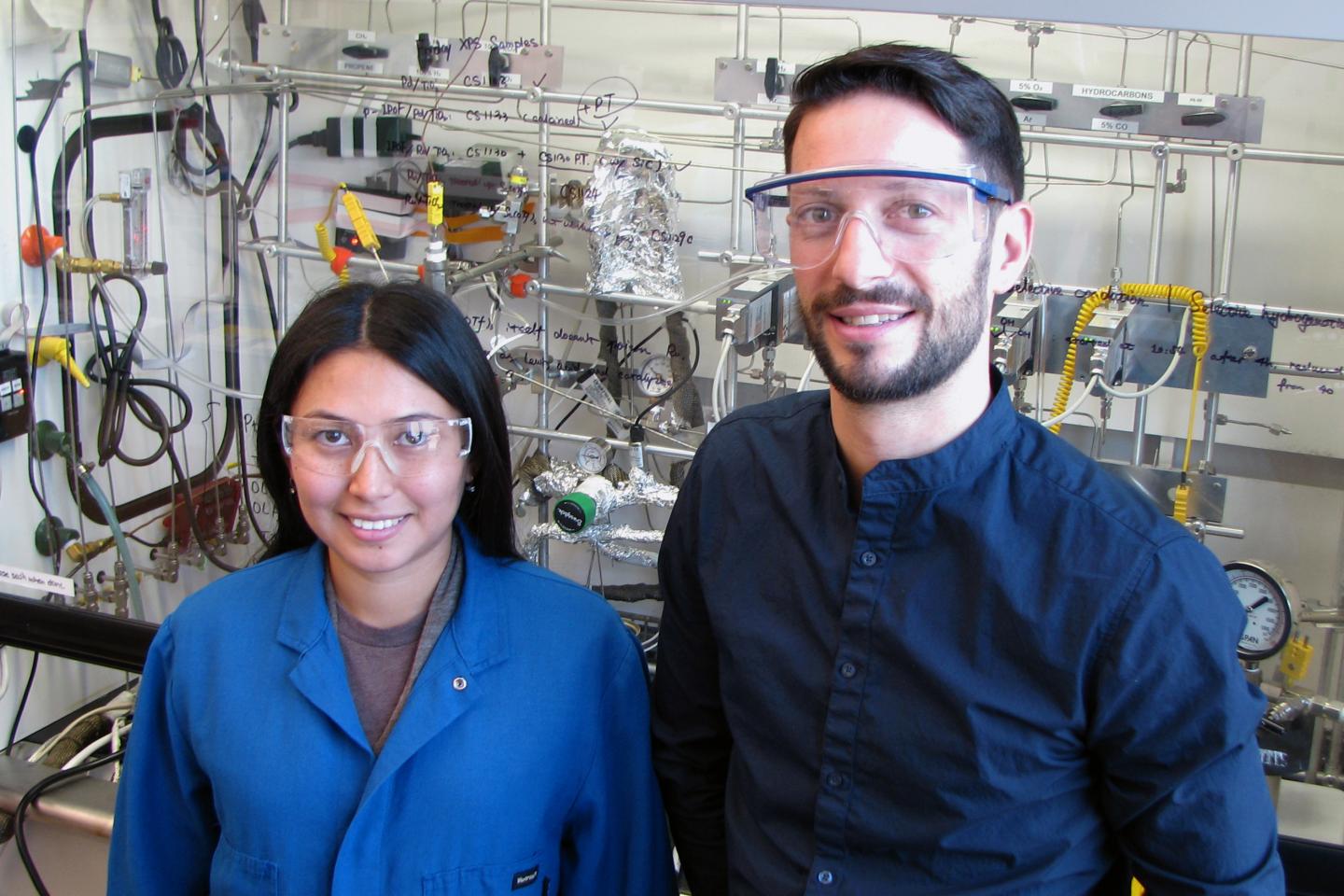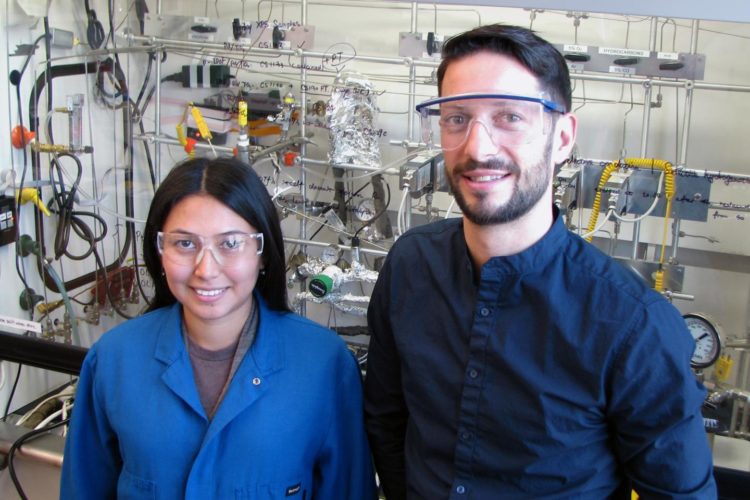
Credit: Mark Golden
Imagine grabbing carbon dioxide from car exhaust pipes and other sources and turning this main greenhouse gas into fuels like natural gas or propane: a sustainability dream come true.
Several recent studies have shown some success in this conversion, but a novel approach from Stanford University engineers yields four times more ethane, propane and butane than existing methods that use similar processes. While not a climate cure-all, the advance could significantly reduce the near-term impact on global warming.
“One can imagine a carbon-neutral cycle that produces fuel from carbon dioxide and then burns it, creating new carbon dioxide that then gets turned back into fuel,” said Matteo%20Cargnello:%20%0D%0A” target=”_blank”>Matteo Cargnello, an assistant professor of chemical engineering at Stanford who led the research, published in Angewandte Chemie.
Although the process is still just a lab-based prototype, the researchers expect it could be expanded enough to produce useable amounts of fuel. Much work remains, however, before average consumer will be able to purchase products based on such technologies. Next steps include trying to reduce harmful byproducts from these reactions, such as the toxic pollutant carbon monoxide. The group is also developing ways to make other beneficial products, not just fuels. One such product is olefins, which can be used in a number of industrial applications and are the main ingredients for plastics.
Two steps in one
Previous efforts to convert CO2 to fuel involved a two-step process. The first step reduces CO2 to carbon monoxide, then the second combines the CO with hydrogen to make hydrocarbon fuels. The simplest of these fuels is methane, but other fuels that can be produced include ethane, propane and butane. Ethane is a close relative of natural gas and can be used industrially to make ethylene, a precursor of plastics. Propane is commonly used to heat homes and power gas grills. Butane is a common fuel in lighters and camp stoves.
Cargnello thought completing both steps in a single reaction would be much more efficient, and set about creating a new catalyst that could simultaneously strip an oxygen molecule off of CO2 and combine it with hydrogen. (Catalysts induce chemical reactions without being used up in the reaction themselves.) The team succeeded by combining ruthenium and iron oxide nanoparticles into a catalyst.
“This nugget of ruthenium sits at the core and is encapsulated in an outer sheath of iron,” said Aisulu Aitbekova, a doctoral candidate in Cargnello’s lab and lead author of the paper. “This structure activates hydrocarbon formation from CO2. It improves the process start to finish.”
The team did not set out to create this core-shell structure but discovered it through collaboration with Simon Bare, distinguished staff scientist, and others at the SLAC National Accelerator Laboratory. SLAC’s sophisticated X-ray characterization technologies helped the researchers visualize and examine the structure of their new catalyst. Without this collaboration, Cargnello said they would not have discovered the optimal structure.
“That’s when we began to engineer this material directly in a core-shell configuration. Then we showed that once we do that, hydrocarbon yields improve tremendously,” Cargnello said. “It is something about the structure specifically that helps the reactions along.”
Cargnello thinks the two catalysts act in tag-team fashion to improve the synthesis. He suspects the ruthenium makes hydrogen chemically ready to bond with the carbon from CO2. The hydrogen then spills onto the iron shell, which makes the carbon dioxide more reactive.
When the group tested their catalyst in the lab, they found that the yield for fuels such as ethane, propane and butane was much higher than their previous catalyst. However, the group still faces a few challenges. They’d like to reduce the use of noble metals such as ruthenium, and optimize the catalyst so that it can selectively make only specific fuels.
###
Other Stanford contributors include doctoral candidate Emmett Goodman and postdoctoral fellow Liheng Wu. Contributors from SLAC National Accelerator Laboratory include research associate Adam Hoffman and postdoctoral scholar Alexey Boubnov. Other co-authors were from Thermo Fisher Scientific.
Media Contact
Mark Golden
[email protected]
650-724-1629
Original Source
http://news.
Related Journal Article
http://dx.





